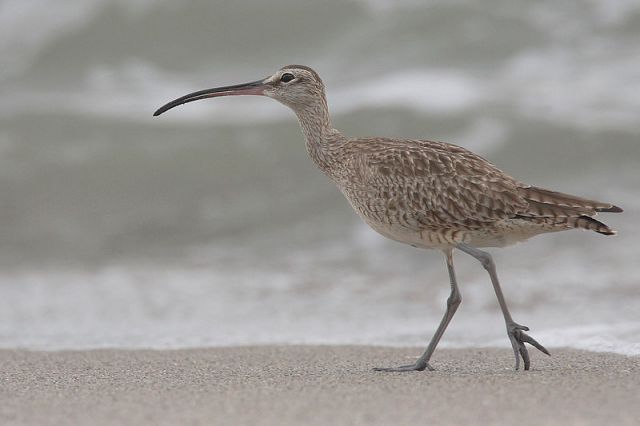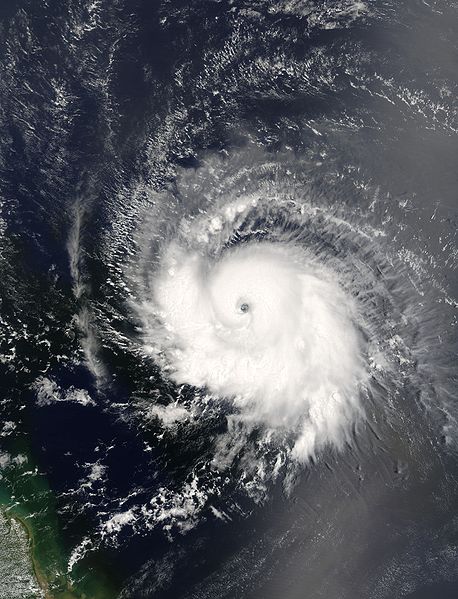 Whimbrel (Numenius phaeopus). Credit: Mdf at Wikimedia Commons.
Whimbrel (Numenius phaeopus). Credit: Mdf at Wikimedia Commons.
A whimbrel named Chinquapin left his breeding grounds on Southampton Island in the Canadian Arctic on 22 August, passed over New England and was far out to sea when he found himself up against Hurricane Irene‘s strongest Category 3 winds last Wednesday. Shortly thereafter his satellite transmitter went dead and the researchers following his migration feared the worst. Whimbrels are capable of flying 3,500mi/5,633kms without stopping—but not in 130mph/209kph winds. As usual, in August, Chinquapin was en route to his wintering grounds on beaches near the mouth of the Amazon River in Brazil to feed on small invertebrates captured in the sand with the help of his own specialized bill—the angle of which exactly matches the burrow curve of a fiddler crab (Uca spp.). Long-lived (≥19 yrs) whimbrels encounter many dangers in the course of their travels. Yet apparently crossing Irene only slowed Chinquapin in his tracks. On Friday last week his satellite began to transmit again—from Eleuthera Island in the Bahamas. Sweet spot to probe the sand.








